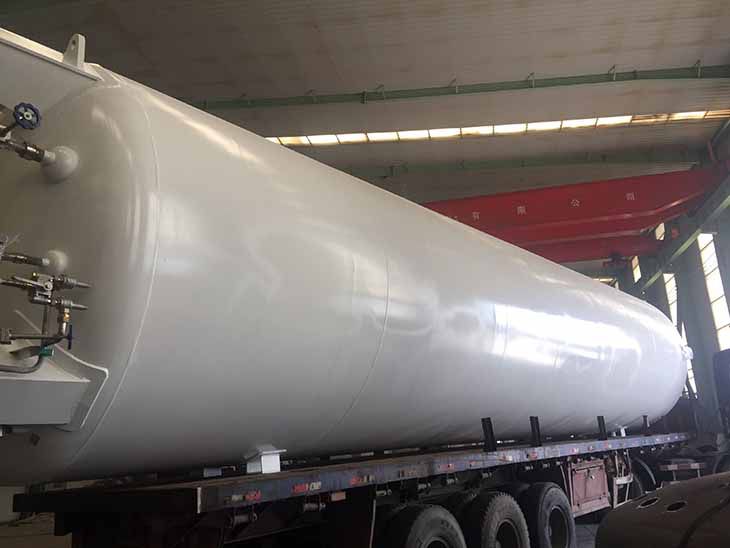Cryogenic storage tank is a kind of jacketed vacuum powder adiabatic pressure vessel specially used for storing and supplying low temperature liquefied gases (such as liquefied natural gas LNG, liquid nitrogen, liquid oxygen, liquid argon, liquid carbon dioxide, etc.). In industrial production and daily life, it has been widely used. In this paper, through the analysis of the hazardous characteristics of cryogenic liquids, combined with a variety of cryogenic storage tank gas supply mode, briefly describe its basic requirements and safety use points.
Analysis of the hazardous characteristics of low-temperature liquids: low-temperature liquids have a lower boiling point, greater expansion, strong asphyxiation and strong oxidation and other hazardous characteristics.
1.Boiling point of low-temperature liquids:
The boiling point of cryogenic liquids under 101.3KPa pressure: -196℃ for liquid nitrogen, -183℃ for liquid oxygen, -186℃ for liquid argon. When in contact with the human body, it will cause serious frostbite to the skin and eyes. A small amount of low-temperature liquid leakage or leakage in the pipe valve, will absorb the heat of the surrounding environment, the leakage point will quickly condense frost, and in serious cases, ice.
2.the expansion of low-temperature liquids:
Low-temperature liquids receive high heat from the surrounding environment or a large number of leaks to absorb the surrounding energy, its volume will expand due to rapid vaporization. In 0 ℃ and 101.3 KPa pressure, 1L cryogenic liquid gas volume: nitrogen for 674 L, oxygen for 800 L, argon for 780 L. In closed containers or pipelines, due to the cryogenic liquid vaporization and the internal pressure rise, easily caused by the container or pipeline overpressure explosion.
3.Leakage of cryogenic liquids:
In the environment around the cryogenic liquid storage tank, cryogenic liquid leakage and vaporization is easy to form a gas-rich area. If the nitrogen, argon, carbon dioxide concentration is large, it is easy to cause asphyxiation injury. In addition, when the oxygen concentration is large, oxygen-rich injury will also occur.
4.Oxidation of low-temperature liquids:
Oxygen is a strong accelerant, has a very strong oxidizing properties. Liquid oxygen and combustible materials close to the open flame is very likely to cause combustion; and combustible materials in contact, due to vibration, impact and other easy to produce explosive shock; mixed with combustible materials, with the potential risk of explosion. Liquid oxygen can adhere to the clothing fabric, and when it meets the ignition source, it is easy to cause flash fire and hurt the person.
Post time: May-31-2023

